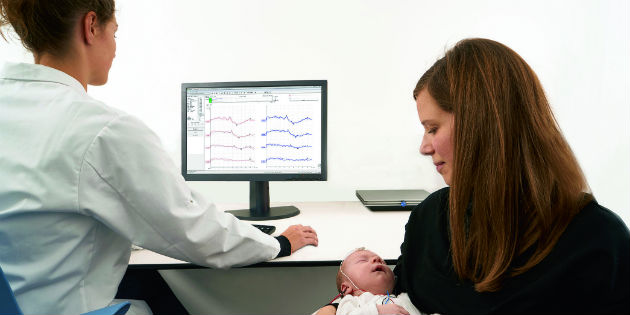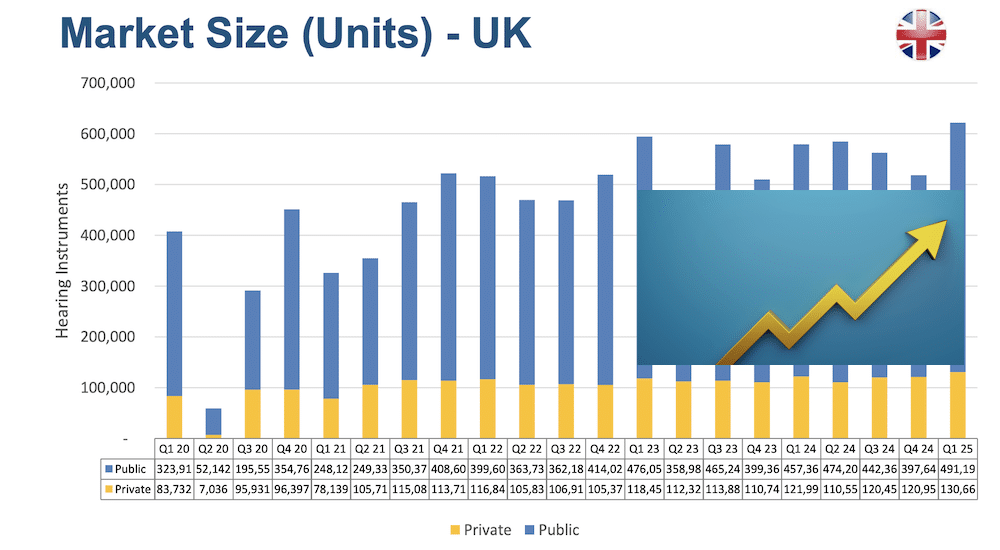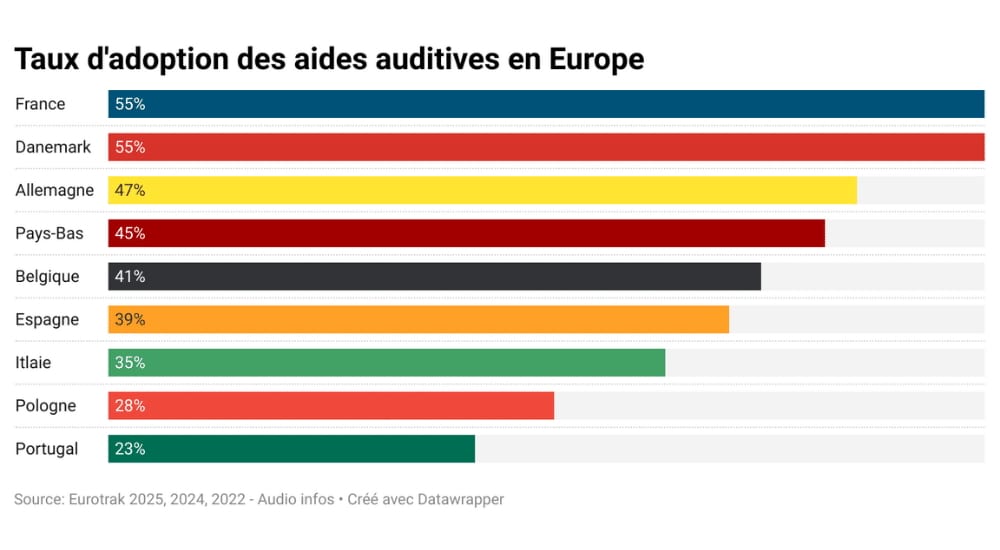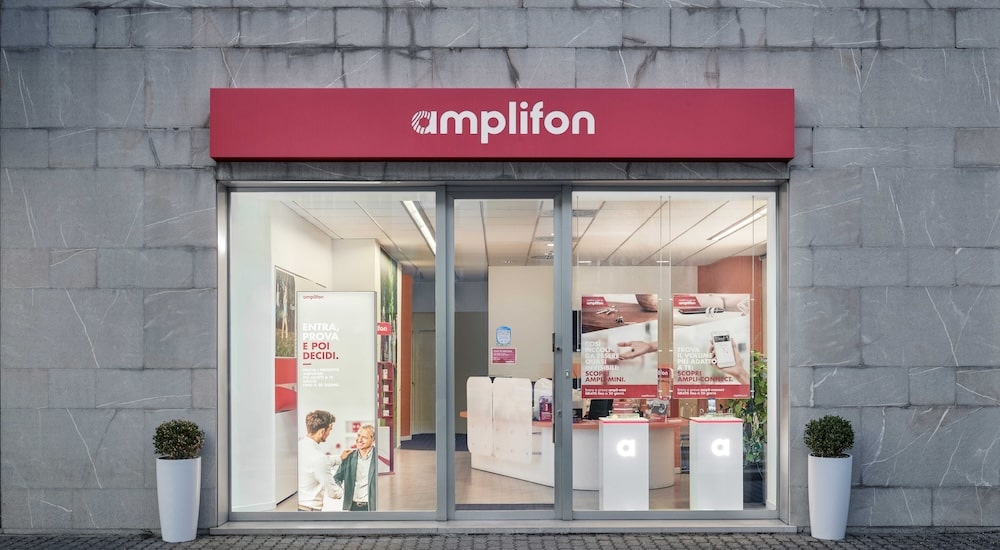Connecting the dots in audiometry: The ‘audiometer à la carte’
Diagnosis Technology
Audiometry is changing at a fast pace. Whatare the main developments of the past decadeand what is still to come?

Audiology Worldnewsinterviewed a professor and several audiologistsand manufacturers of audiometrical equipment.They express their views on the past, present andfuture of audiometry.
Professor Sophia Kramer, VU UMC:“Implement PROMs”
Pure-tone audiometry is a cornerstone method inaudiology to identify an individual’s hearing thresholdlevels at different frequencies and to determine thedegree, type and confi guration of the hearing loss.“With the resulting audiogram, pure-tone audiometryis a magnifi cent tool and indispensable in audiologicalpractice”, professor of Auditory Functioning andParticipation Sophia Kramer of the VU University Medical Center Amsterdam confirms. “However, whether pure puretoneaudiometry suffices as a single tool to assess anindividual’s hearing difficulties as experienced in daily lifeis highly questionable. From research we know that theaudiogram is a poor predictor of daily hearing difficulties.People with a relatively good audiogram may experiencebig hearing problems in daily life, whereas those withmoderate to severe levels of hearing impairmentaccording to the audiogram may experience relativelysmall limitations in hearing. It all depends on the contextin which an individual is functioning. For example, whatare the auditory demands an individual is exposed to?
In order to get an impression of how the hearing loss isperceived by an individual, the use of a questionnaireor a patient-reported outcome measures (PROM) is anadequate option. There is ample evidence showing thatself-reported hearing disability is a signifi cant predictor ofhearing aid use and hearing aid satisfaction. It is thereforeworthwhile to consider implementing PROMs in routineaudiological practice.”
There is an additional reason why the use a PROM inaudiological practice is warranted: it is now widely knownthat in order to process degraded speech, a listener needsto exploit cognitive resources to understand the message.Someone’s cognitive abilities therefore affect someone’sability to understand speech. The pure-tone audiogramreveals the state of a person’s peripheral hearing, butdoes not take the cognitive aspects of hearing intoaccount. A PROM does because an individual’s cognitiveskills are automatically incorporated in the self-reportedhearing status.”
A suggestion
The challenge is now, Kramer states, to act upon thisconclusion in the audiology practice worldwide. “Inthe Netherlands the combined use of a pure-toneaudiogram and a questionnaire has become standardpractice since the introduction of the new protocol forthe provision of hearing aids. Personally, I welcome thisdevelopment. Given the available scientific evidence, Ihave always recommended including a validated andreliable questionnaire in this protocol. It will definitelybenefit the hearing aid user in the end.” Kramer seesopportunities for the audiometer manufacturers: “Why notaim innovation towards incorporating relevant questionsor a questionnaire into the equipment, so that kind of acombined score (pure-tone audiometry and self-report)becomes available to assist in the diagnosis of hearingdisability? It is a way to make sure a more completemeasurement of someone’s hearing status is made andto help the dispenser or audiologist to decide on theappropriate rehabilitation service for the person with thehearing loss.”
Carsten Kind, Interacoustics:“Innovation in ABR”
Carsten Kind is President of Interacoustics in Middelfart,Denmark. Interacoustics developed its first audiometer in1969. “In the 70’s, our products were always hardwarebasedand primarily focused on audiometry. Today, we area full-line supplier, with products ranging from compacthandhelds to sophisticated desktop or PC-based solutionsacross the fields of balance, audiometry, tympanometry,hearing aid fitting as well as ABR and OAE”, he says.Interacoustics has always aimed at being at the front edgeof new technological supplies. “This is why, in addition to ourtraditional R&D department, we have our own InteracousticsResearch Unit at the Technical University of Denmark,Lyngby, Copenhagen. This team of four researchers work inclose cooperation with many international academic groups,all involved in Interacoustics’ research projects. Theirfunction is to ensure that relevant new science is developedinto applicable functions that can be introduced in ourproducts.”
Threshold assessment
In addition to providing tools for subjective audiometry,Interacoustics also focuses on gaining estimatedaudiograms through objective ABR measurements. Kind:“By placing electrodes on the scalp, we can extractand record auditory evoked potential from ongoingelectrical activity in the brain and thereby obtain anobjective audiogram.” Brainstem audiometry is incrediblyinformative, especially in cases when a patient cannotcooperate with the doctors. It is also an area that issubject to constant innovation, Kind says: “In recentyears, we have focused on the development of fast andreliable instruments that are sensitive enough to diagnosechildren or infants with hearing loss. And we’re stillimproving technology at high speed. We’re for instanceintegrating new technology into our Eclipse platform allthe time. The technology teaches us a lot about the brain.It helps us define the type of hearing loss and the besttreatment possibilities.” New research has also resulted inreduced test time. “A few years ago, a test would take anhour. Today, 10 minutes are sufficient.”
Another crucial development in audiometry has beenthe shift to software-based solutions. “We move towardssoftware databases and e-health supporting solutions”,Kind says. “This has many advantages. Provided that thepatient receives the assistance of a qualified technician,a person living in – for instance – Greenland, can bediagnosed by an ENT doctor in Copenhagen. We are in factalready doing this; we can do a full test of the hearing.”
Mario Cambiaghi, Resonance:“Counseling and Verbal Task MotionResponse Test”
Mario Cambiaghi is Sales and Operations Director ofResonance Medical Devices, an Italian-based companyoffering turnkey solutions for hearing assessment. “Weprovide innovative, effective and quality solutions foraudiology”, Cambiaghi explains. Resonance manufacturesa full range of audiometers, middle-ear analyzers andcombined systems forclinical, diagnostic andscreening purposes. He seesan important trend with boththe patient and the doctor; the quest for high quality counseling. “The doctor wantsto inform his patient in the best possible manner abouthis hearing loss. He wants to present test results to thepatients in a way that is comprehensible for and usefulto the patient. At the same time, the patient is eager tounderstand his hearing loss. Therefore, the counselingside of the audiometer has become more important. It’snot only about collecting results, it’s also about explainingthe hearing loss to the patient.”

Verbal task motion response
Cambiaghi underlines Sophia Kramer’sstatement that conditions of use are veryrelevant for the prescription of a hearing aid.“Audiometry must try to recreate real life conditions in orderto be able to check the real hearing capacity of a patientand come to the best diagnosis. Speech-in-noise tests arecrucial. At Resonance we are currently investigating a newtest, together with the Greater Polyclinic Hospital of Milan.It’s a Verbal Task Motion Response test, which means thatwe do speech-in-noise tests that incorporate a task. Thesubsequent patient’s actions inform us about the level of hishearing loss and his brain activity. We not only know whetherthe brain understands the assignments, but also what partof the brain is active.
Speed up the workflow
Developments in audiometry are going at a high speed,Cambiaghi says. “We’re introducing new features everyfew years. One of the aims is to speed up the workflow:doctors are required to see more patients per day.Also, doctors want to be able to share information veryquickly for consulting purposes. Software enables us toquickly integrate new functionalities in existing devices.Resonance is a relatively small company, but it’s wellequipped for the fast development and introductionof upgrades.” At AudiologyNOW!, Resonance was showingits entire line of screening devices, its VRAsystemfor children’s tests and the telemedicinefunctionality of its portable audiometer.
Riccardo Rizzoli, Inventis:“Software, new tests and design”
Riccardo Rizzoli is the International Sales Managerof Inventis, the Padova-based Italian manufacturerof audiometers, tympanometers, fitting equipmentand software suites. Inventis is active in 60 countriesworldwide. “We’re a high-tech-oriented companydeveloping and manufacturing cutting-edge medicaldevices for audiology”, he says. “We are guided byfour main principles: innovation, design, ergonomicsand computer centricity.” Inventis was the firstcompany to introduce an iPad-controlled audiometer,the Piccolo. Through an app, available on the Apple App Store, one can control Piccolo using one’s iPadconnected to the audiometer via Bluetooth. “Computersand tablets are incredible sources of computationalpower”, Rizzoli says. “Stable, easy-to-use software iscrucial today.”

New tests and design
Inventis is working on a new comprehensive softwarecalled Maestro, which has been redesigned for being theunique software interface for all Inventis products, upto-date with the latest clinic demands. Together with theimplementation of the TEN test and QuickSIN exams,Maestro is part of a process aimed to bring the dailypractice to a new level of technology.
Easy-to-use software can be the key of the success alsoof other instruments, like the Real Ear Measurementsystem. Rizzoli: “Inventis has recently released a new REMsystem, Trumpet. It shows clinicians how simple it can beto run a hearing aid fitting verification if intuitive softwareguides you through it.”
Rizzoli also underlines the importance of design. “A welldesigned device can improve the user and patientexperience. And when I say ‘well designed’, I meanboth the ergonomics and the esthetics of the device.An audiometer can be a thing of beauty too, seducing thepatient to cooperate. Good ergonomics help improve theuser efficiency and reduce the risk of error.”
Clément Sanchez,audiologist, Otometrics:“À la carte audiometry”
Clément Sanchez is both productmanager of Otometrics and audiologist.“Since a couple of years, the trend isto make audiometers more softwarebased.This makes audiometry muchmore flexible, since it becomes a loteasier to introduce new applications.You just have to have the softwareonline available and connect it toan iPhone or a tablet.” The shiftObjective threshold assessment with Interacoustics Eclipse. towards software-based audiometry has also a commercial angle to it; a client doesnot need to buy all applications, he can just buythe applications that are relevant to his patients.“We’re heading for à la carte audiometers”, Sanchezsays. “We’re dematerializing the audiometer andintroducing the app.”
Counseling, tinnitus and lip reading
Sanchez agrees with Mario Cambiaghi that softwarechanges the way audiologists and ENT doctors work.“The audiometer is more than a test, it has become a toolfor counseling and education of the patient. We can, forinstance, make the patient’s wife or child experience thehearing loss of the patient. This helps them understandthe situation. We can also simulate the amplification ofthe hearing aid and thus counsel the patient.”

Otometrics has recentlyintroduced a new test,making it possible tomeasure the maskability oftinnitus. “In the past, we hadto work with questionnaires,but with a new test wecan do deeper and more precise diagnostics. Thequestionnaires gave a more subjective outcome, the testenables a more objective outcome. It helps professionalsto see if the tinnitus can be masked.”
Another trend is the development of tests that createmore realistic environments. “We already have speechin-noise tests, but we are working on even more real lifesolutions. For that, we need different libraries of soundand the way to root a sound. You need several speakersin a test area, with the voice of your wife coming from theleft and music in your back. We’re working at optimizingthis test.”
Also, Otometrics is working on lip-reading tests. “With thehelp of a hearing aid, we can improve a person’s hearingfrom let’s say 20% to 50%. Lip reading can add an extra20% to that. We know this to be true, but it’s difficult toconvince the patient. With a good test, we could show himthe difference.”
Online diagnostics for medical deserts
Sanchez agrees with Carsten Kind that it becomesso much easier to provide online diagnostics. “Incountries where distances are huge, technology enablesaudiometry and hearing aid fitting at a distance. Thedoctor is in a clinic, a technician or a nurse in a satellitelocation. It is an ideal solution forwhat is being called ‘the medicaldesert’, those areas where there isno doctor available within an hour’sdrive. And it’s exactly there wherethe aging persons live.” With thedepopulation of rural areas, it’s agrowing problem. “Countries need to come up witha solution. Either they have to resort to telemedicinesolutions, or they have to increase the population ofdoctors dramatically. This not only costs a lot of money,but it also takes years.”
Brent Nissly, Grason-Stadler:“Telemedicine and self-testing”
Brent Nissly, General Manager/COO of Grason-Stadlerin Minneapolis, USA, is committed to delivering reliableinnovations for audiologists and hearing care professionalsto address the growing demand for hearing care services.The company is introducing a solution developed byAudiology Inc. for the Veterans Affairs Hospitals in the USAcalled the GSI-AMTAS, Nissly says: “GSI-AMTAS is a self-administeredassessment tool that provides an automatedmethod for obtaining an audiogram. The test includes airand bone conduction thresholds with masking as well as speech audiometry. The AMTAS software is loaded ontoa touch screen computer, our audiometer is attachedto provide calibrated tones, the headphones and boneconduction are applied, and the test commences.” The factthat the test is self-administered allows the audiologist toconsult with or test other patients at the same time. Testresults can be stored in GSI Suite, forwarded to Noah oremailed to a remote location for telehealth evaluation.Telehealth is important, Nissly says: “In less developedcountries there is a growing need for audiologists andhearing care professionals. The world population isincreasing and living longer, yet many countries still do nothave formal audiology programs and too few hearing careprofessionals to meet this demand. We as an industry needto make sure we are developing products that are easy touse and to maintainfor the healthcareprofessional.Automated clinicaltesting such asAMTAS will assistthe healthcareprofessional in these countries, increase their level ofclinical accuracy and meet the goal that we all share,increased patient care.” Nissly agrees with his colleaguesthat software-based audiometry is becoming more andmore important to the professional. “We for instancehave just launched the Pello™, an adaptable mid-levelaudiometer. It has four configuration options, allowing eachpractice to mix and match features based on clinic andpatient needs. The Pello can be purchased in one form andlater upgraded to change or add features.”
Wendy Switalski, audiologist:“Software integration increasesconnectivity—in more waysthan one”
Wendy Switalski, audiologist and Audiology DevelopmentManager of Otometrics/Audiology Systems in Illinois,USA, is very enthusiastic about the development of theaudiometer in recent years. Mrs. Switalski works closelywith Clément Sanchez and she agrees with him on the benefits of PC-based audiometry. “Audiometers that areintegrated with other test equipment help hearing careprofessionals and audiologists save time, and allow formore time to be spent in patient counseling or to seemore patients. We have seen a huge efficiency gain by theintegration of the audiometer into the PC. For example,our MADSEN® Astera2 audiometer, combined with otherequipment within the OTOsuite® Universe, enables toclinicians to support the full patient journey from thediagnostic phase into hearing instrument fitting andverification.”
New solutions have minimized the possibilitiesfor error. The quality of speech testing has been raised. “Developing new software enables ongoingenhancements. We can build specific modules,like the tinnitus testing modality and new functionsfor pediatric patients.”
Care at a distance
Wendy Switalski also agrees with Clément Sanchezthat today’s technology enables hearing care at adistance. “The PC-integrated platform allows for morepatients to be served by providing a method to makeaudiology telepractice and mobile clinics a reality. Itenables clinicians to expand their reach. All you need isa connection between two computers and you can offerhigh care services to remote areas.” Switalski explainsthe growing need for telemedicine from the fact thattechnology allows for it. “There always was a need,but now we have the opportunity. It gives people timelyaccess to hearing care, so more people will use it. Andit is welcomed by governmental agencies, since it offersthe possibility to minimize the costs of hearing care.”Potentially, telemedicine is possible for all levels of hearingcare, she says, provided the right assistance is available.For some pediatric care, for instance, a higher level ofskills may be required.
So, what will the future bring? Mrs. Switalski has no doubtthat the use of PC and tablet will continue and that remotehearing care will become more common. “Also, we will seethe further increase of connectivity: we will be connectingour data on hearing to other healthcare systems, inorder to construct an overall health picture. We know, forinstance, that diabetes, depression and different cancertreatments have an impact on the hearing. If we connectthe dots, we will not only be gaining in efficiency, but alsoin quality of health care.”
Remco van der Kruit, International SalesManager of MedRx, Largo, USA:“Smaller, easily updated and portable”
MedRx is manufacturer of PC-based audiometers,REM/LSM fitting systems and software solutions.Van der Kruit: “Over the years we have seen adecrease in the size of audiometers and a moveto more software-based control. The move tosoftware-controlled audiometry has allowedthe audiometer itself to become smaller, easilyupdated online and more portable. Softwarecontrolledproducts are well suited fortelemedicine purposes, offering great possibilitiesfor growing practices, hospitals, Veteran Affairsoffices and rural areas. A full testing solution,like for instance our MedRx AVANT ARC all-in-oneAUD/REM solution, can be placed in a satelliteclinic to provide full audiometric and REMtesting for an audiologist.” Equipment is HIDcompatible, and therefore ‘plug and play’. “Thiseases the installation process of audiometersas the clinician or a technician does not need toinstall drivers or attach the devices to specificUSB ports.” Also, all MedRx audiometers nowinclude built in QuickSIN testing. Van der Kruit:“This provides a greater understanding of thepatient’s ability to understand in difficultlistening environments.” There are needs fornew testing methods as an audiometer can belimiting for certain aspects of hearing liketinnitus assessment. Van der Kruit: “MedRx hasimplemented a new way to perform tinnitusassessment that is more accurate and very easyfor the clinician to perform. The assessmenthas built-in reporting and general guidance onimplementing the results into leading hearing aidmanufacturers.” At AudiologyNOW!MedRx showcased the full range ofMedRx audiometers, Real Ear Measurementsystems, video otoscopes, tympanometers andthe new MedRx tinnitus assessment tool. Van derKruit: “We think it will change the way cliniciansthink about tinnitus assessment.”

Photos: Inventis, Interacoustics, MedRx, Otometrics, Resonance.
Learn more on the history of audiometry here


